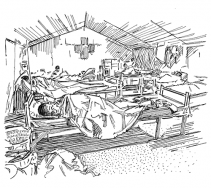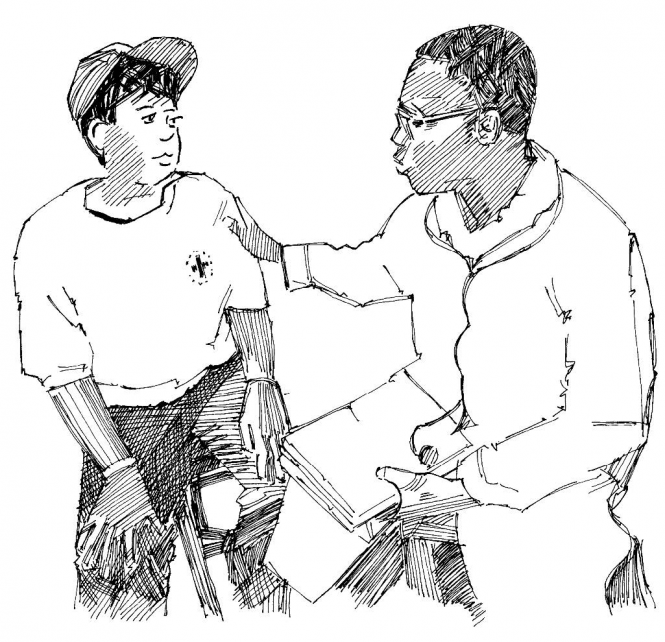04. Community referral to health facilities
Overview
During an epidemic, sick people frequently cannot be treated at home or by volunteers or family. They require medical care and need to go for treatment to a health clinic or hospital.
When carrying out epidemic prevention and control activities in the community, always keep the idea of referral in mind.
A community referral is a recommendation (often made by a community volunteer) to seek services at a health facility or from a health care professional. This recommendation is usually based on the identification of signs of disease or the risk that a disease poses to a person, family or community. A community referral is not a confirmation of illness, nor is it a guarantee that any specific treatment will be given. A diagnosis, and any subsequent treatment, is determined by a health professional and not by the community volunteer.
What to do and how to do it
Identifying people who need to be referred
- Learn the symptoms of the disease that is causing the epidemic and the signs that indicate that affected people should be referred to health facilities
- Always keep your own safety and protection in mind
- With the advice of your supervisor, find out how you can tell when a person is severely ill and needs to be referred
Map and visit referral facilities
- Unless there is only one referral facility in the community, the selection of a health facility for volunteers to which to send community referrals should be done by a health professional supporting or working at the National Society and validated by the National Society leadership. Volunteers cannot decide alone to which facilities they can send referrals.
- Once a health facility has been identified and validated by the National Society, with the support of your manager, visit health facilities and talk to doctors and nurses to coordinate referrals
- Inform them about Red Cross Red Crescent branch activities in which you are involved and how this may lead to community referrals from branch volunteers trained in epidemic prevention and control
- Discuss the best method for sending sick people from the community to the health facilities:
- Public transport?
- Can people access it? Pay for it?
- Can sick people use it?
- Is there a risk of disease transmission to other passengers?
- Ambulance services?
- Does the health facility have ambulances?
- Does the Red Cross Red Crescent branch have ambulances?
- Can people access them? Pay for them?
- How do you contact the ambulance?
- Is the disease highly infectious and requiring special transport?
- If the disease is highly infectious (like Ebola or Marburg), special transport must be arranged so that there is no risk that other people could not infected
- Tell them about your activities and how you plan to do referrals. Take advice from them
- Public transport?
Plan and prepare to make referrals
- Plan how referrals will be made and facilitated
- Can the National Society provide transport?
- Do people have money to pay for transport?
- Does the health facility require prior notification of the referral? If so, how will the health facility be informed of the referral?
- Always carry the relevant disease tool with you when you are doing community-based referrals
- This will help you remember what you should know about the disease and its symptoms.
Making a referral
- Volunteers act on behalf of their National Society and must have the consent of the National Society before undertaking activities. They should be trained in the principles of the Red Cross Red Crescent Movement and should have appropriate training and supervision before making community referrals.
- Volunteers should obtain the consent of the person to the referral, or of the guardian if it is a child.
- Volunteers should work to uphold these principles:
- Confidentiality – It is important to keep information about community members private and not to discuss people’s health, healthcare or other private details with others in the community. Remember that breaches of confidentiality often happen unintentionally, for example, when discussing the day’s work with friends or family members.
- Respect – It is important to respect peoples’ choices and decisions, even if you do not agree with their choices.
- Safety – If you have concerns about the safety or security of a person (in relation to the community referral, or any other aspect of their situation), you should discuss it with your supervisor to find a safe solution if possible.
- When you refer, always explain clearly to the family concerned what the disease may be, what its symptoms are, and why you think referral is necessary.
- Give the family information about the health facilities available and how to reach them by different means of transport
- Help the family if special transportation is needed
- Give the family information about the health facilities available and how to reach them by different means of transport

